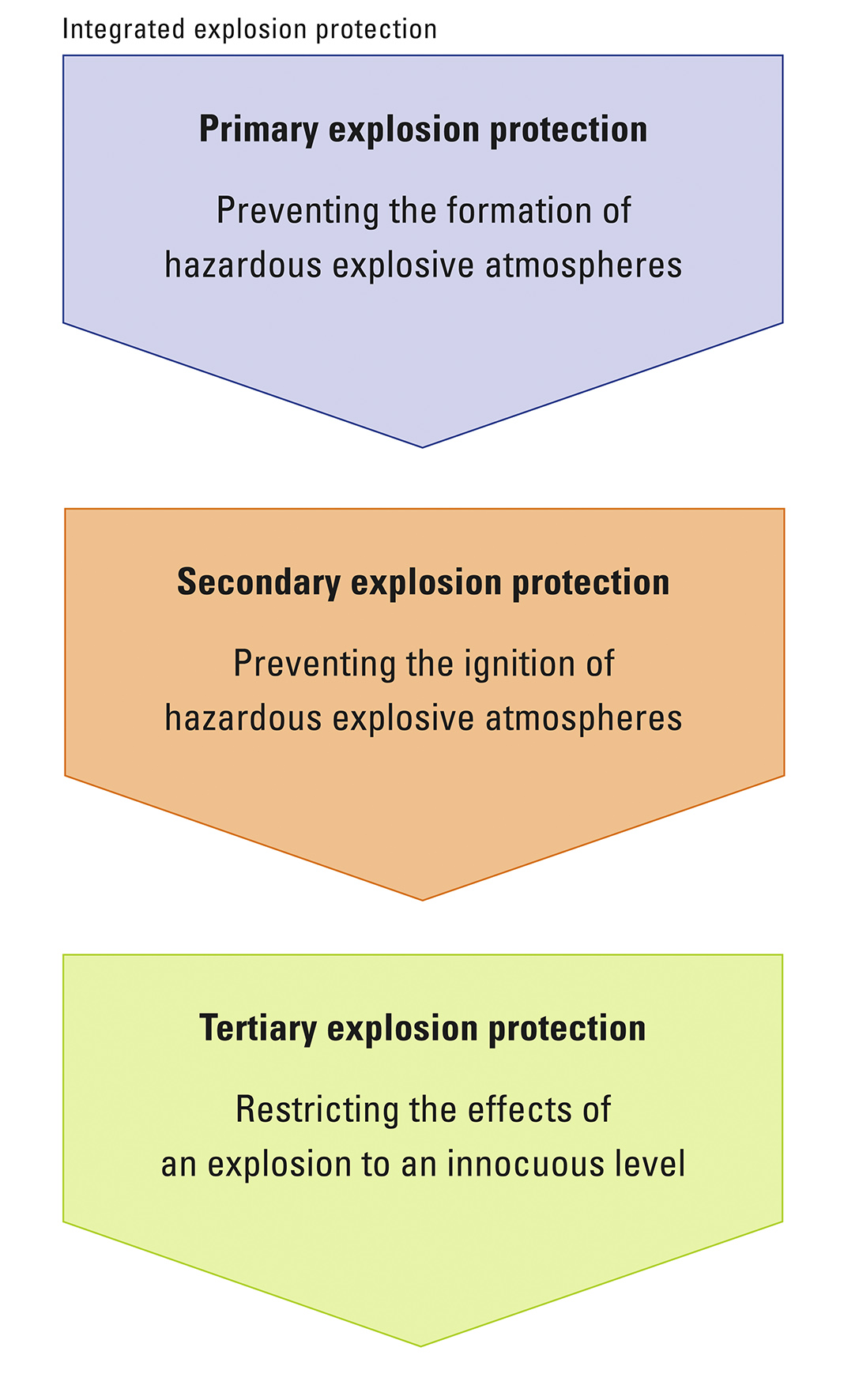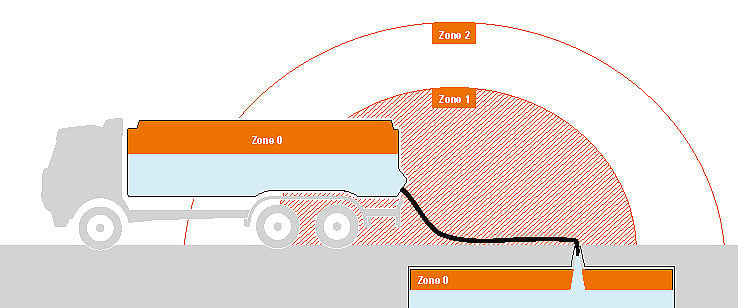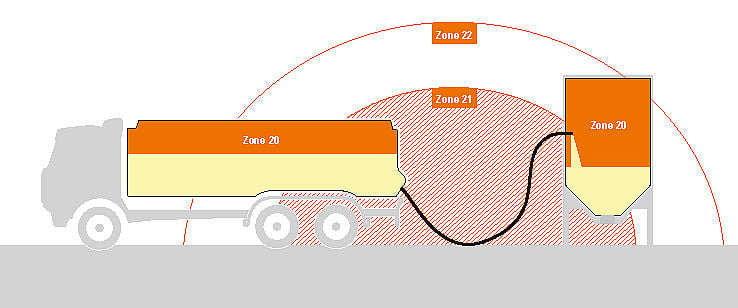Physical and Technical Background

Physical and technical background
An explosion is a sudden chemical reaction of a combustible substance with oxygen under release of high energy. These combustible substances can be gases, mists, vapours or dusts. An explosion can only proceed if three factors come together: a combustible substance (in appropriate distribution and concentration), oxygen (in the air) and an ignition source (e.g. electric spark).
It is important, therefore, to avoid an ignition or to minimise the effects of an explosion to a safe extent. For this, all operating equipment used in potentially explosive atmospheres must be designed, manufactured and marked according to the applicable regulations (ATEX product directive 2014/34/EU, IECEx regulations). The equipment is classified into groups and categories according to ATEX product directives or EPL according to IECEx standards in dependence on their area of use or the safety level of the protective measures and the frequency with which a potentially explosive atmosphere occurs. The highest possible potential hazard must be considered in this regard in each case.
Only explosion-proof equipment may be used in areas in which explosive atmospheres can occur in spite of all measures to avoid them. This equipment is constructed in various ignition protection classes in accordance with the corresponding construction regulations (IEC/EN 60079 standards series and ISO 80079-36/EN ISO 80079-36 standards series). Which ignition protection class the manufacturer uses depends on the type and function of the equipment. All standardised ignition protection classes in a category are equivalent. The manufacturer certifies in the EU declaration of conformity contained in the technical documentation that the product complies with the ATEX directives.
Integrated Explosion Protection
The principle of integrated explosion protection requires that all explosion-protection measures are implemented in a fixed order. A distinction is drawn between primary, secondary and tertiary (constructional) protection measures.

Classification into Zones
According to the definitions of the German Ordinance on Hazardous Substances (GefStoffV), potentially explosive areas are subdivided into zones to facilitate selection of appropriate and suitable equipment and electrical installations. The zone classification indicates the probability of a potentially explosive atmosphere occurring.

Gases
Zone 0: is an area in which hazardous, potentially explosive atmospheres prevail as a mixture of air and combustible gases, vapours or mists continuously, over long periods of time or frequently.
Zone 1: is an area in which a hazardous, potentially explosive atmosphere can form as a mixture of air and combustible gases, vapours or mists occasionally in normal operation.
Zone 2: is an area in which a hazardous, potentially explosive atmosphere as a mixture of air and combustible gases, vapours or mists does not normally occur in normal operation, and if it does, then only rarely and for a short time.

Dusts
Zone 20: is an area in which hazardous, potentially explosive atmospheres prevail in the form of a cloud of combustible dust contained in the air continuously, over long periods of time or frequently.
Zone 21: is an area in which a hazardous, potentially explosive atmosphere can occur in the form of a cloud of combustible dust contained in the air occasionally in normal operation.
Zone 22: is an area in which a hazardous, potentially explosive atmosphere in the form of a cloud of dust contained in the air does not normally occur in normal operation, and if it does, then only rarely and for a short time.
Ignition Protection Classes for Electrical Equipment

Overview of ignition protection classes
General requirements for design, testing and marking of electrical equipment and components.
Standard: IEC 60079-0 | EN 60079-0 | UL 60079-0
Ignition Protection Classes for Non-Electrical Equipment

Overview of ignition protection classes
General requirements for design, testing and marking of non-electrical equipment and components.
Standard: ISO 80079-36 | EN ISO 80079-36

 United Kingdom - EN
United Kingdom - EN



